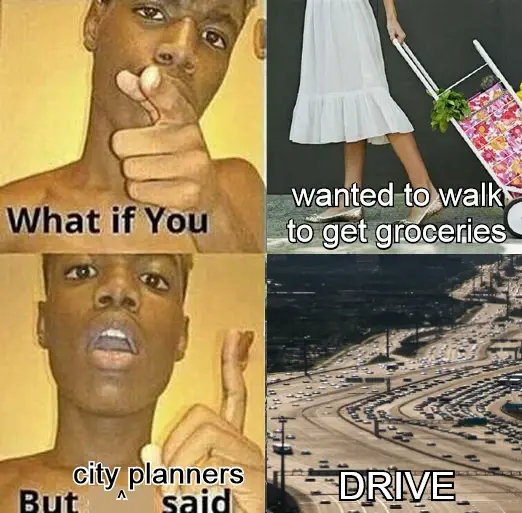view the rest of the comments
Fuck Cars
A place to discuss problems of car centric infrastructure or how it hurts us all. Let's explore the bad world of Cars!
Rules
1. Be Civil
You may not agree on ideas, but please do not be needlessly rude or insulting to other people in this community.
2. No hate speech
Don't discriminate or disparage people on the basis of sex, gender, race, ethnicity, nationality, religion, or sexuality.
3. Don't harass people
Don't follow people you disagree with into multiple threads or into PMs to insult, disparage, or otherwise attack them. And certainly don't doxx any non-public figures.
4. Stay on topic
This community is about cars, their externalities in society, car-dependency, and solutions to these.
5. No reposts
Do not repost content that has already been posted in this community.
Moderator discretion will be used to judge reports with regard to the above rules.
Posting Guidelines
In the absence of a flair system on lemmy yet, let’s try to make it easier to scan through posts by type in here by using tags:
- [meta] for discussions/suggestions about this community itself
- [article] for news articles
- [blog] for any blog-style content
- [video] for video resources
- [academic] for academic studies and sources
- [discussion] for text post questions, rants, and/or discussions
- [meme] for memes
- [image] for any non-meme images
- [misc] for anything that doesn’t fall cleanly into any of the other categories

Last I checked, a day isn't 5 hours long.....
Let's give you a shot here and say they only operate 12 hours out of the day, that means the busiest train in the WORLD only does 35,000 an hour. But the graph is claiming 60-90k per hour.
If I can point out that very OBVIOUS bias/flaw in the chart, what is the reason I should take it seriously at all?
That's not the busiest train in the world, though. That's the busiest HIGH-SPEED RAIL in the world. You're ignoring all the metro systems and suburban rail lines in the world that serve the massive daily commute market.
Regardless, even the 35k per hour of that rail line is still an order of magnitude higher than cars on roads. Cars, no matter how you slice it, are wildly space-inefficient.
You're comparing maximum capacity to actual usage... weekday peak hours are like 80% of weekly passengers on most functional rail systems. Very common for the rest of the hours to run half schedules or smaller carriages because it's simply not necessary, but the network can handle it if required.